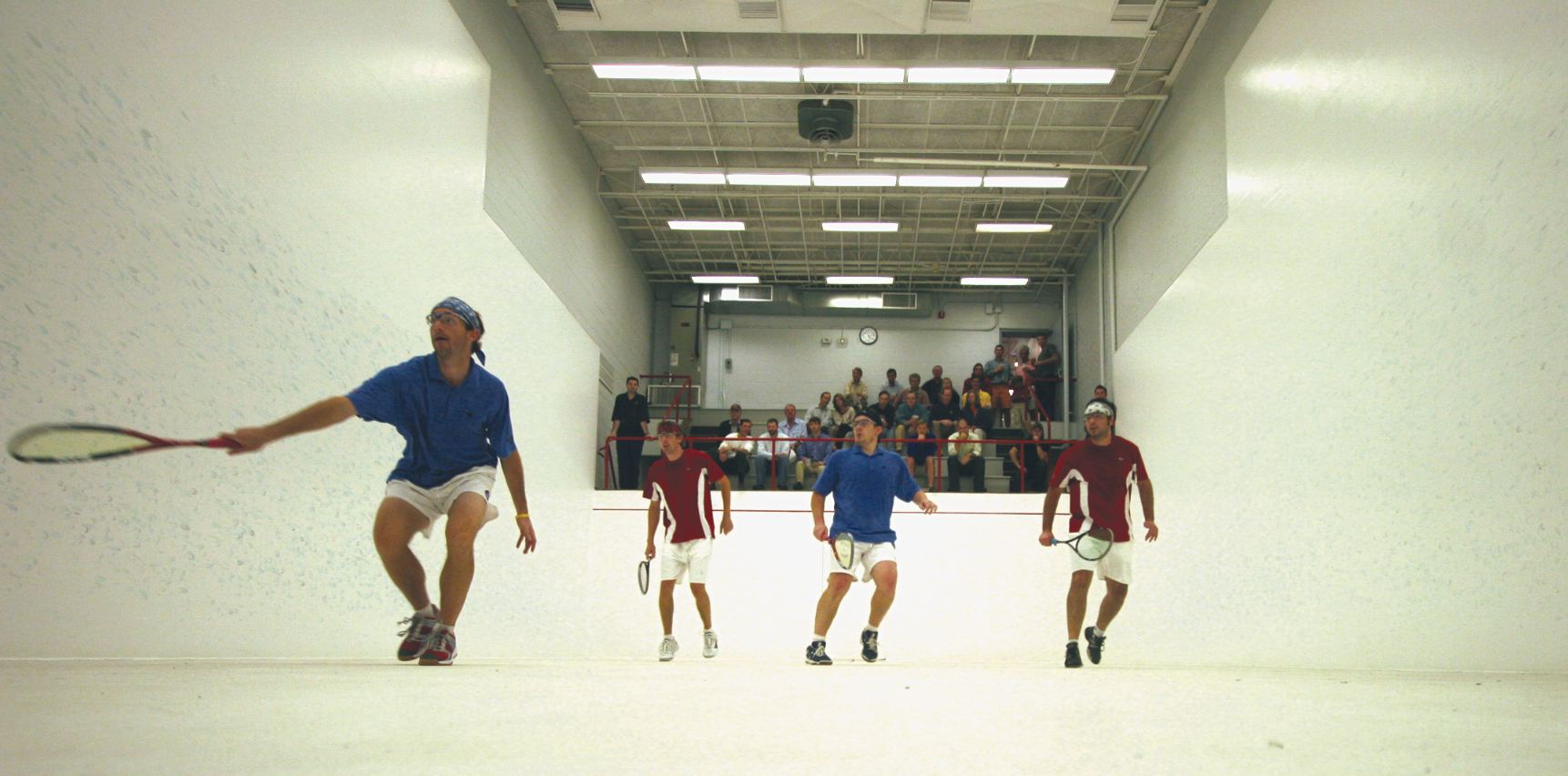
By Steve Crandall
Vice President, Sales & Marketing
Ashaway Racket Strings
One of the most gratifying things to watch in squash over the past few years has been the dynamic resurgence of hardball doubles. The only racquet sport to be invented in the US (albeit by an English-born player named Fred Thompkins in 1907), hardball doubles enjoyed wide popularity until the late ‘70s when interest began to flag and courts began to disappear. Now it is resurging. According to SquashTalk columnist Rob Dinerman, more than 20 new hardball doubles arenas “have sprouted up” in the past two years, and more are on the way.
Tournaments are flourishing as well. On the pro side, the International Squash Doubles Association (ISDA) now hosts a 20-event, professional tour with some $600,000 in prize money which attracts top-tier PSA stars like Jonathon Power, Chris Walker and Paul Price. For amateurs, there is the World Doubles tournament played every two years in Toronto or Philadelphia, and, in the words of squash historian Jim Zug, “an exciting tournament mix of traditional invitational draws, city and state draws, member-guests, parent-childs, pro-ams and annual inter-club, inter-city and international matches.”
We’ll leave it to pundits like Rob and Jim to analyze why this resurgence in popularity of hardball doubles. Our interest, of course, is on the stringing end of things. Do doubles players need different string? Do they string differently or at different tensions? To get a good overview, we thought we’d go right to the top and ask Preston Quick.
As many of you are aware, Quick is a quickly rising star in the doubles world (no pun intended). Currently head squash professional at the Union Boat Club (Boston, MA), Preston has firmly established himself as one of the top players on the ISDA tour. As a junior he dominated the US rankings and helped guide Trinity College to two Intercollegiate Championships. He won the World Doubles Championship in 2006 with Chris Deratney and, in the 2006-2007 season, Preston and regular partner John Russell made it to four ISDA finals and won the US National Doubles Championship.
As it happens, Preston is also an accomplished stringer, working both out of the Pro Shop at the Boat Club, and on the road. As for tips on stringing for doubles, he says “tighter is better. With doubles the ball is harder and probably a little heavier, so the strings need to be tighter. The harder you can hit the ball, the tighter you want the string, to give you more control. But even if you’re not looking to hit the ball hard, but are more of a finesse player, the tighter you want it to go. So where a soft ball racquet is strung anywhere from 23 to 30 lbs, with hardball you really don’t go below 32. I’ve strung racquets at close to 40 and even into the 40s.”
But that harder ball and higher tension, he said, “does increase breakage. Not only because you’ve got a harder ball pushing on the strings, but also because when the hard ball catches the frame, or the side of the string pattern, it’ll pop the strings, not from wear, but just too much tension at that one point.”
In his own play, Preston says he’ll go through two or three sets of string in a weekend tournament. After using SuperNick® XL Titanium for years he recently switched to the newer SuperNick XL Micro. While he likes the feel and playability of the thinner string, he says it doesn’t last as long. “I’m having a lot more problems with it breaking on the sides of the frame; the thinner the string you get, the more likely mishit breaks are going to happen.”
However, he feels the improved feel and playability are so important, he’s not inclined to go back to the heavier string. “Even the top level guys want to have as much playability as possible,” he said. “They’re pushing the limit. Even I am, as well, using that thinner string. It’s breaking more often but I’d rather have it.”
Rather than switch back, he’s trying some innovative stringing techniques, including adding another cross string to the frame, and sometimes even an additional main. “If you look at the average racquet, on the top, between the last string and the top grommet holes, a lot of times there’s about an inch of string that has no cross-piece in it. What I’ll do is put another cross-piece in up there, so you only have about half an inch that doesn’t have a cross-piece before it hits the grommet hole. Sometimes I’ll even do it on the sides, adding an extra main string. What it does is build up resistance in those areas and minimizes breakage.”


